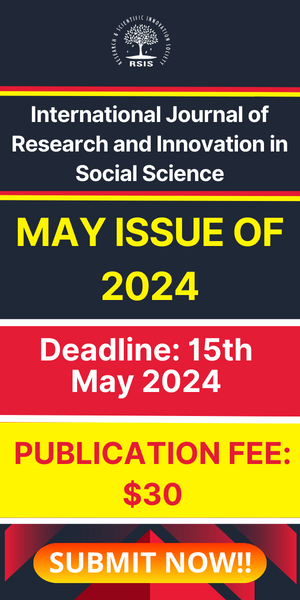Applying Blockchain Technology in Seafood Supply Chain Management
- August 31, 2021
- Posted by: RSIS
- Category: IJRIAS
International Journal of Research and Innovation in Applied Science (IJRIAS) | Volume VI, Issue VII, July 2021|ISSN 2454-6194
Applying Blockchain Technology in Seafood Supply Chain Management
Assoc. Prof. Dr. Le Nguyen Doan Khoi
Department of Scientific Research Affairs, Can Tho University
Abstract: Global markets, mainly in Europe and America, require traceability to control quality and seafood safety. For shrimp supply chain quality management, such as production and processing, blockchain technology has been used in some countries. At this moment (2020), shrimp produced in Vietnam often do not satisfy the expectations of Western consumers with respect to the desired quality, especially in traceability system for accuracy technology (Khoi, 2020). The scientific challenge with respect to the improvement of the quality traceability of seafood supply chains implies the structural incorporation of the important elements in the process of food production, which are based on current scientific research for quality-orientated product development. This paper investigated the legal issues, and evaluate the costs and benefits to companies and countries that use blockchain technology in shrimp supply chain management.
Key words: shrimp supply chain, quality management, blockchain, traceability
I. INTRODUCTION
Seafood safety has become a top priority for the public and the private sector in Europe (Luning et al., 2006). European food legislation has been shaped by a blend of scientific, societal, political and economic forces to establish and maintain a high level of protection of human health (FAO, 2002). This has to be accomplished in such a way that it does not arbitrarily or unjustifiably discriminate against any international trading partner (Van Plaggenhoef et al., 2003).
The development of both public and private food safety standards has been driven by numerous food scandals (Dioxin, BSE, Avian influenza…). Consumers have become concerned about the safety of the food they consume. Food safety regulations do not only provide health protection, but also protect other consumer interests through providing them with accurate information.
As a result, the EU food industry is challenged to increase food product quality, and consumer trust, eliminate food hazards, and increase traceability of food products throughout the production chain. EU governments are reacting by imposing tighter food safety requirements and the private sector is, increasingly, using food safety standards such as HACCP, SQF, EUREP-GAP, etc. as a competitive variable in commercial strategies (Willems et al., 2005).


